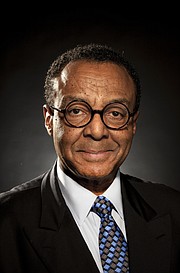Ready for driverless cars?
Clarence Page | 8/23/2018, 6 a.m.
Shortly after the first automobile arrived in the small but grandly named village of Ohio City, Ohio, an old story goes, someone brought a second car to town — which soon collided with the first.
This story, which I learned growing up in another Ohio town, provided such an excellent example of Murphy’s Law — “Anything that can go wrong will go wrong” — that I was very disappointed to hear that the story was not true.
In fact, the first recorded auto accident in history did occur in Ohio City, Ohio, in 1891, according to the Ohio History Central website. But it only involved one car, a single-cylinder, gasoline-powered “horseless carriage” driven by inventor James William Lambert. It collided with a tree root, careened out of control and smashed into a hitching post, a twist that must have amused the town’s horse fans as a form of poetic justice.
Yet the two-car version of the story endures, perhaps as an outward expression of our collective anxieties as humans about trusting new technologies. More than a century after those early cars hit the road, similar apprehensions have boiled up again in the national debate over a new vehicular innovation — driverless cars.
On one hand, the rise of self-driving automobiles holds great promise. Computerized driving can reduce fuel consumption and air pollution by maximizing efficiency in accelerating, braking and reaccelerating. Driverless cars can be safer because they don’t get drunk, sleepy or distracted by texting or other dangerous temptations.
But seriously, are we ready for this?
As much as I, for one, love my smart phone, tablet and other new wave gadgets, I’m too “old school” as a driver to trust even my car’s cruise control button for more than a few miles.
After all, I came up in a generation for whom a car is more than just a ride. From Chuck Berry’s red Cadillac — now displayed at the Smithsonian National Museum of African American History and Culture — to the Beach Boys’ “Little Deuce Coupe” and beyond, Americans have embraced their cars like members of the family.
As a high school buddy of mine used to say, when times get tough, “you can live in your car, but you can’t drive your house.”
Our cultural car love may be the most under-appreciated reasons why most Americans in a Pew Research Center poll last year expressed more worry than enthusiasm for driverless cars. Only 39 percent said they felt “enthusiastic” or “very enthusiastic” about them and 56 percent said they definitely were not ready to ride in one.
I expect our mixed feelings will warm up over time, just as new technologies tend to be embraced more eagerly by younger generations. But for now, those mixed feelings help to explain why two bills to regulate self-driving vehicles, the SELF DRIVE Act passed by the U.S. House of Representatives and the AV START Act pending in the U.S. Senate, appear to be stalled amid other election-year politics.
As various states have created a complicated patchwork of regulations across the country, the industry eagerly seeks the consistency of federal laws. Yet consumer advocates and safety experts say the feds should tap their brakes until the new vehicles have been more thoroughly tested.
The public is with them on that, according to a new poll released recently by Advocates for Highway and Auto Safety, a 29-year-old alliance of safety, consumer, public health and insurance organizations. It found that 69 percent of Americans said they were “concerned” about their safety when sharing the road with driverless vehicles as motorists, bicyclists and pedestrians.
And an even larger majority of Americans, 84 percent, support the organization’s push to delay acting on driverless car legislation until the National Transportation Safety Board can complete its investigations of at least seven crashes, including four fatalities, and other failures that already have occurred with self-driving vehicles in the past three years.
They include a May 8 accident in which two teenagers died in the fire that resulted from the crash of a Tesla Model S into a wall in Fort Lauderdale, Fla. Another driver died on March 23 in a Tesla Model X that struck a safety barrier in Mountain View, Calif. On March 18, an Uber test vehicle struck and killed a pedestrian walking a bicycle in Tempe, Ariz.
We’ve come a long way since James Lambert’s horseless carriage hit that tree root. But if we’re still a long way from seeing fleets of safe driver-free cars on the road, I can wait.








